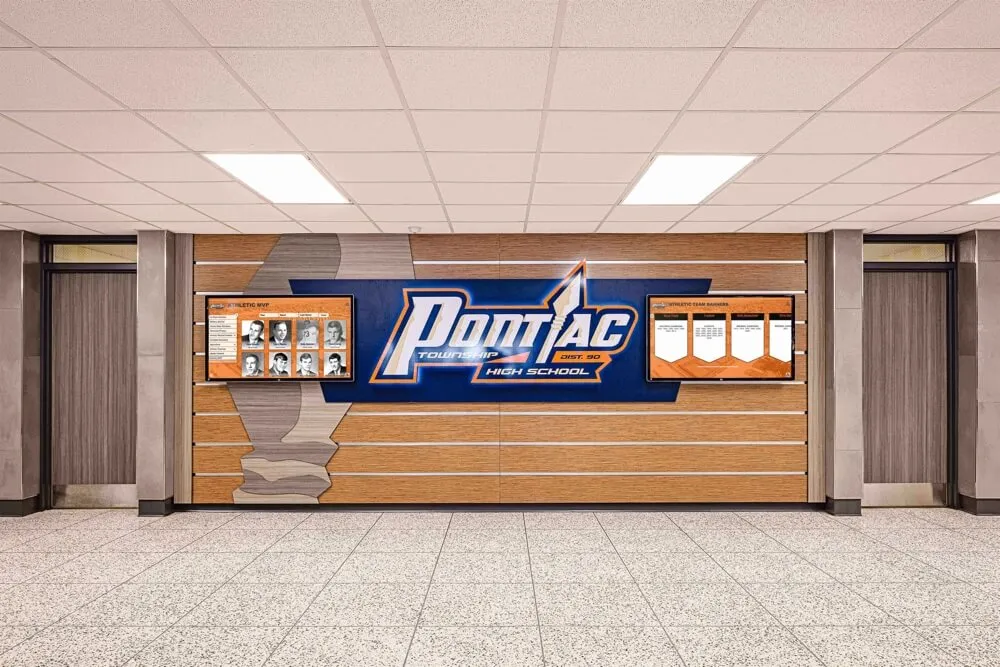Key Takeaways
Discover practical, simple hall of fame ideas for schools and organizations. From traditional displays to modern digital solutions, find budget-friendly recognition options that honor achievements effectively.
Whether you’re a school administrator exploring recognition options, an athletic director seeking to celebrate team achievements, or an organization leader wanting to honor member contributions, the ideas and strategies in this guide provide actionable pathways to meaningful recognition. The best hall of fame isn’t necessarily the most expensive or technologically advanced—it’s the one that authentically celebrates your community’s achievements in ways that engage your specific audience and fit your available resources.
Why Simple Hall of Fame Solutions Work
Before exploring specific implementation ideas, understanding why simplicity often proves more effective than complexity helps frame appropriate choices for your situation.
The Power of Starting Small
Organizations that begin with simple, manageable hall of fame implementations typically achieve better long-term success than those attempting overly ambitious projects. Starting small allows you to:
- Test Concepts: Learn what resonates with your audience before major investment
- Build Momentum: Create early wins demonstrating value to stakeholders
- Refine Approach: Adjust based on real feedback rather than assumptions
- Expand Strategically: Add capabilities and content as experience and resources grow
- Maintain Quality: Focus resources on excellence within limited scope rather than mediocrity across broad ambitions
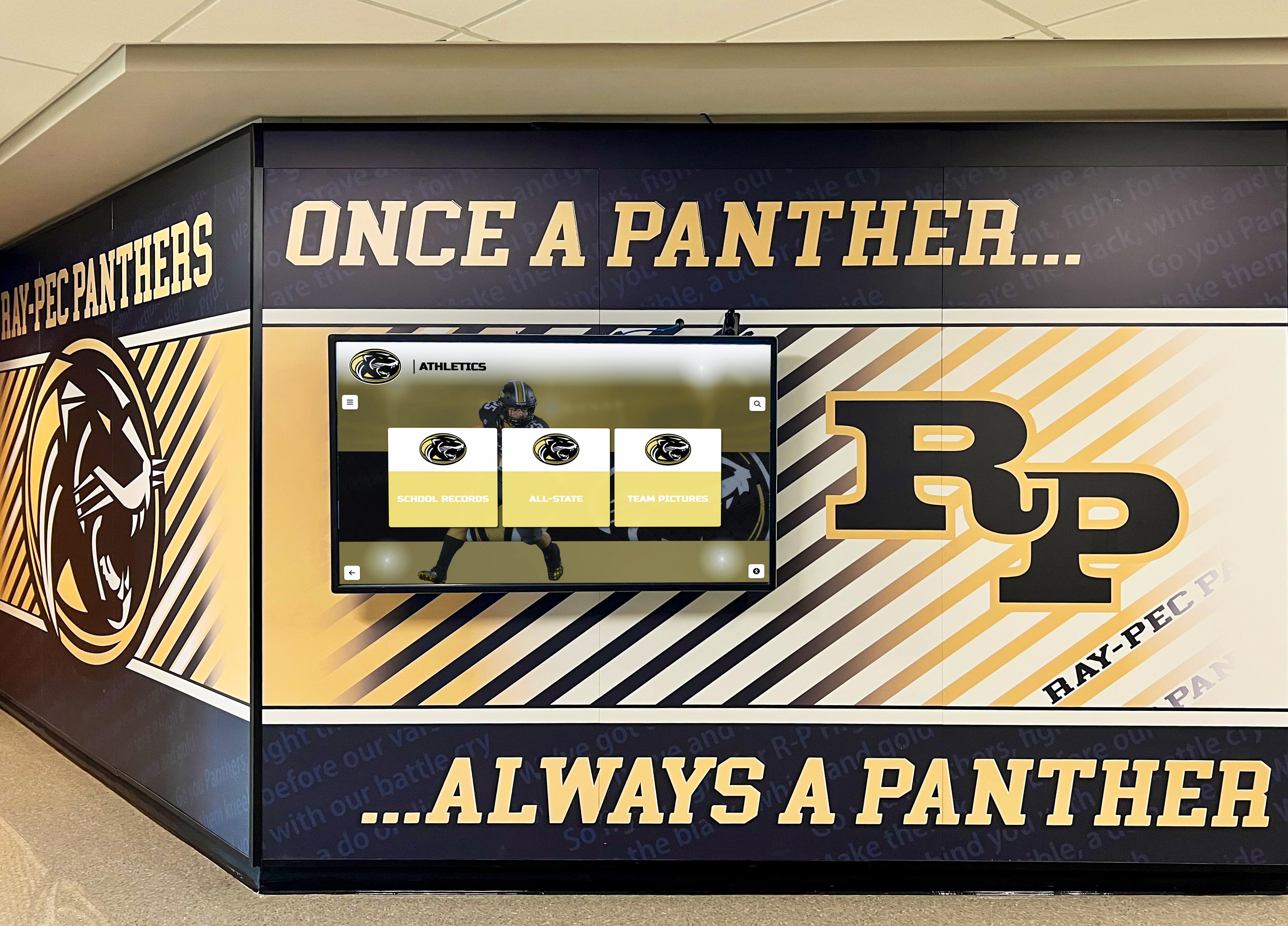
Simple doesn’t mean basic or inferior. A thoughtfully planned modest recognition display honoring key achievements effectively serves communities better than an expensive, under-utilized installation that exceeded available resources or management capacity.
Recognition Fundamentals Matter Most
Regardless of implementation approach, successful halls of fame share common fundamental elements:
Clear Purpose: Stakeholders understand who receives recognition and what achievements warrant inclusion
Visible Location: Displays positioned where your community naturally gathers or passes
Quality Presentation: Professional appearance demonstrating that recognition matters to your organization
Accessible Information: Content organized logically and presented clearly for easy exploration
Regular Updates: New achievements added consistently maintaining current, relevant recognition
Focusing on these fundamentals ensures even simple implementations deliver genuine recognition value while avoiding common pitfalls that undermine expensive projects lacking strategic foundation.
Traditional Simple Hall of Fame Ideas
Physical displays remain popular for their permanence, formal presence, and ability to integrate with architectural environments. These traditional approaches can be implemented simply and cost-effectively.
Framed Certificate and Photo Displays
One of the simplest and most affordable hall of fame approaches involves professionally framing achievement certificates, photos, or printed profiles in uniform frames arranged in organized displays.
Implementation Approach:
Select Consistent Frames: Choose uniform frames (typically 8x10 or 11x14 inches) in matching colors and styles ensuring visual cohesion. Black, dark wood, or metallic finishes work well in most environments.
Create Achievement Templates: Design simple templates including photos, names, years, and achievement descriptions. Templates can be created in Microsoft Word, Canva, or similar tools and printed on quality paper or cardstock.
Organize Systematically: Arrange frames in logical patterns—chronologically by year, alphabetically by name, or grouped by achievement category. Leave expansion space for future additions.
Mount Professionally: Use picture hanging systems or command strips rated for frame weights. Ensure level mounting and consistent spacing between frames.
Budget Expectations:
- Frames: $10-$25 each
- Professional printing: $5-$15 per print
- Mounting hardware: $20-$50
- Total per honoree: $35-$90
This approach works particularly well for schools with limited wall space, organizations just beginning recognition programs, or situations requiring flexibility to relocate displays as facilities evolve.
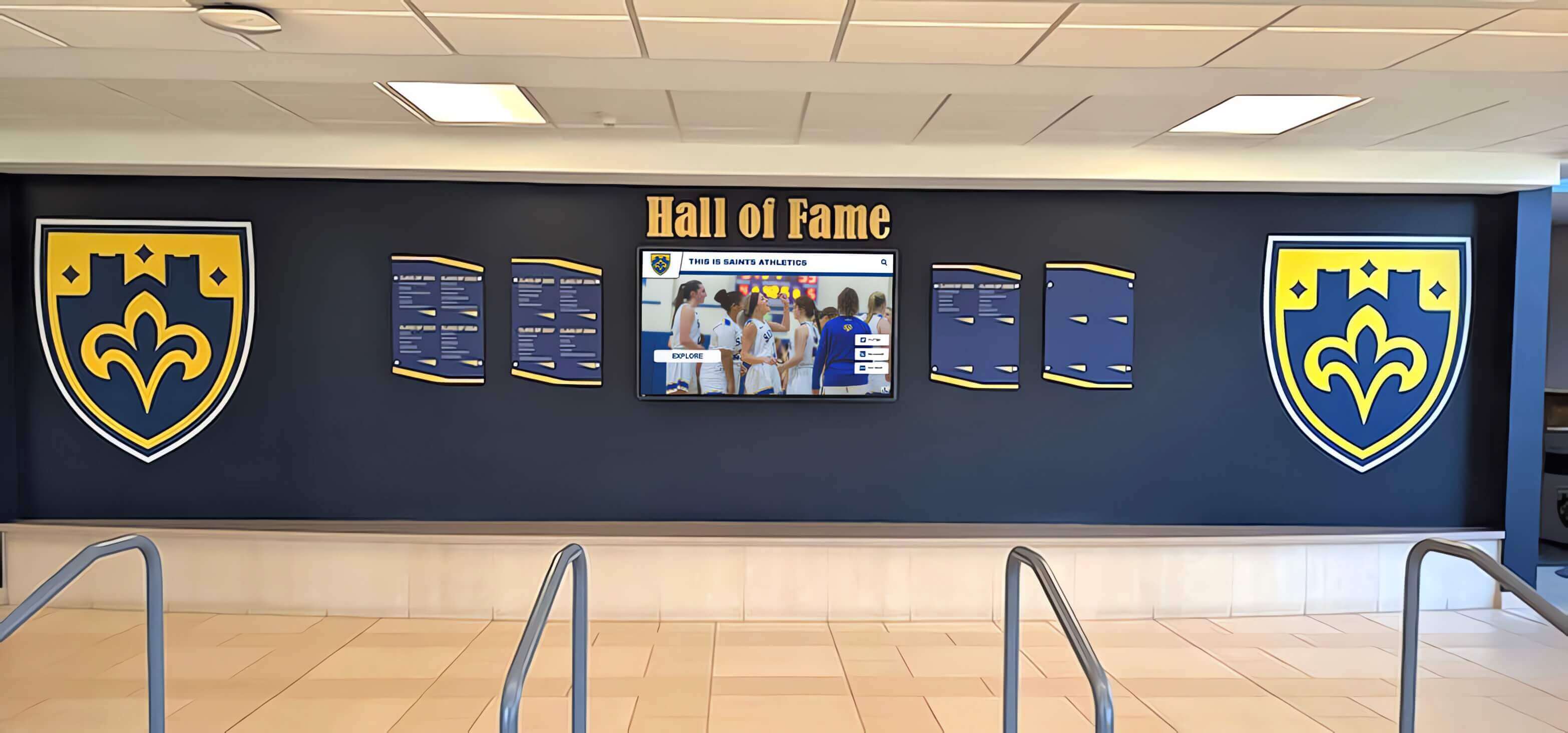
Simple Plaque Walls
Traditional engraved plaques provide formal, permanent recognition that many communities value. Simple plaque programs avoid the high costs of custom designs by using standardized plaque sizes and layouts.
Implementation Strategy:
Uniform Specifications: Select standard plaque dimensions (typically 8x10, 9x12, or 12x15 inches) that all honorees receive regardless of specific achievement. This ensures visual consistency and simplifies ordering.
Basic Information Layout: Include essential details only—name, year or graduation class, achievement or sport, and perhaps one line of additional context. Elaborate designs increase costs without necessarily adding recognition value.
Mounting Systems: Install commercial plaque mounting systems allowing easy addition of new plaques as your program grows. Grid-based systems with standardized spacing look professional and accommodate expansion.
Material Selection: Bronze, brass, and aluminum plaques offer excellent durability. Black-filled lettering on metallic backgrounds provides maximum readability from viewing distances.
Budget Planning:
- Basic engraved plaques: $75-$200 per plaque depending on size and material
- Mounting system: $200-$600 for 20-30 plaque capacity
- Installation: $300-$800 for professional mounting
- Initial 10-plaque installation: $1,500-$3,500
Organizations can phase plaque purchases, ordering 5-10 annually rather than creating entire historical displays immediately. This distributes costs over multiple budget cycles while building comprehensive recognition programs over time.
Bulletin Board Recognition Displays
The most budget-friendly approach involves dedicating bulletin board space to recognition displays using printed materials, photos, and creative layouts.
Creating Effective Bulletin Board Displays:
Professional Background: Cover bulletin board surfaces with fabric, colored paper, or vinyl in school colors creating attractive backgrounds rather than leaving bare cork visible.
Protective Covering: Use clear acrylic sheets or protective overlays preventing damage to photos and printed materials while maintaining visibility.
Organized Layouts: Create sections for different achievement categories, time periods, or recognition types. Use headers, borders, and visual dividers establishing clear organization.
Regular Updates: Refresh displays quarterly or seasonally preventing stale appearances. Rotate featured achievements highlighting different honorees periodically.
Interactive Elements: Include QR codes linking to extended online profiles, achievement videos, or additional historical information for those wanting to learn more.
This approach costs $200-$800 depending on size and materials while providing flexible recognition that evolves easily as your program develops. Bulletin board displays work particularly well as interim solutions while planning more permanent installations, allowing you to test concepts and gather feedback informing long-term decisions.
Modern Simple Hall of Fame Ideas
Digital technology has made sophisticated recognition capabilities accessible at reasonable costs while eliminating many limitations of traditional physical displays.
Single Display Digital Recognition
A single touchscreen display in a high-traffic location provides powerful recognition capabilities without requiring the investment of multiple-display installations.
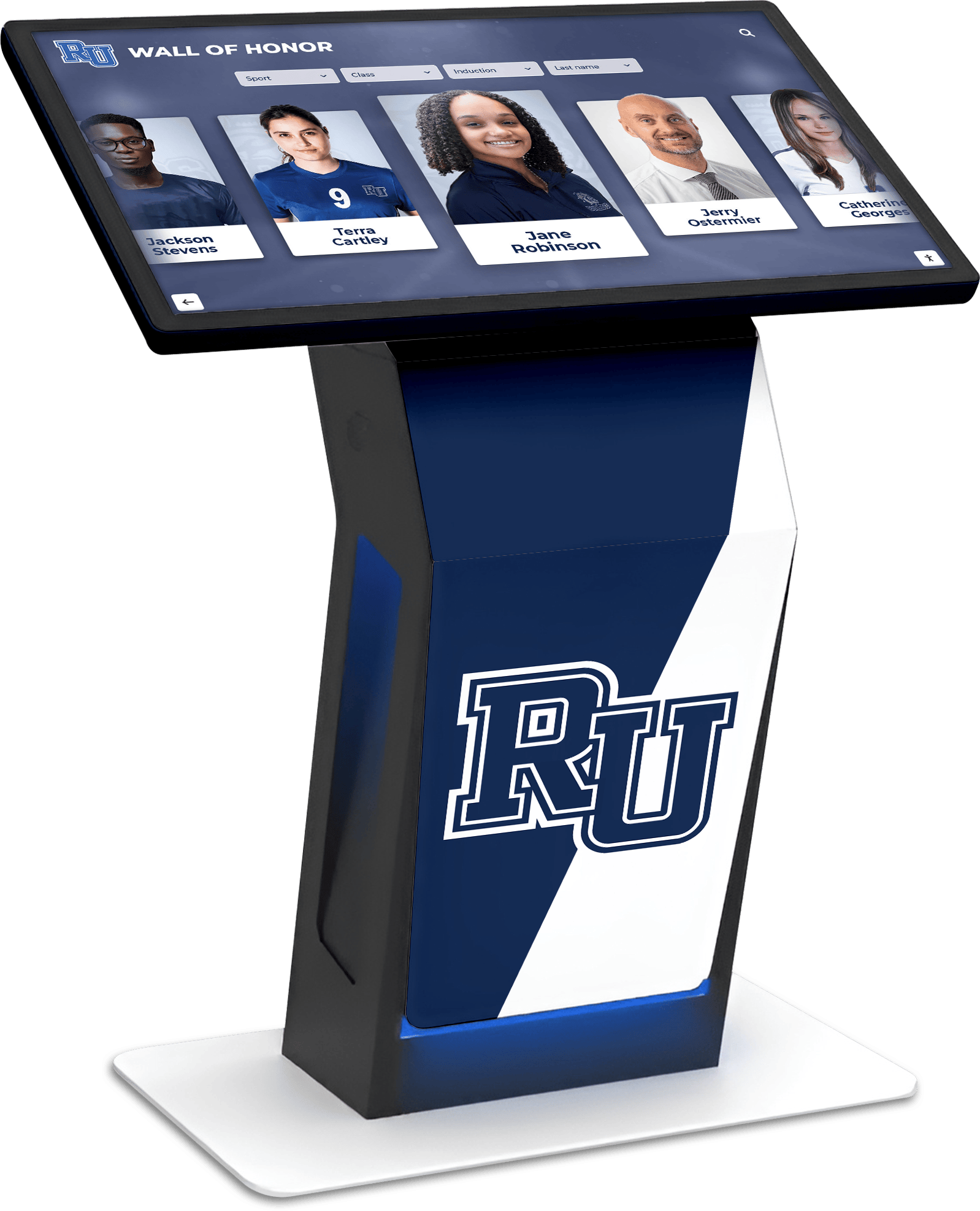
Why Single-Display Solutions Work:
Unlimited Capacity: A single display can showcase hundreds or thousands of achievement profiles—content requiring dozens of traditional trophy cases. Physical space constraints disappear, fundamentally changing recognition strategy.
Interactive Exploration: Touchscreens allow visitors to search for specific individuals, browse by category or year, view detailed profiles with photos and videos, and explore achievements at their own pace rather than being limited to whatever fits physical wall space.
Easy Management: Cloud-based content management systems enable authorized staff to upload achievement photos, enter details and accomplishments, organize by category or time period, and publish updates instantly from any internet-connected device.
Professional Presentation: Modern digital displays provide crisp, engaging visual experiences rivaling or exceeding traditional physical installations while offering capabilities physical displays cannot match.
Organizations implementing digital recognition displays discover that starting with a single well-placed touchscreen delivers more recognition value than spending equivalent resources on limited-capacity traditional displays. Solutions like Rocket Alumni Solutions provide purpose-built platforms specifically designed for educational recognition rather than adapted generic digital signage systems.
Single Display Implementation:
Location Selection: Choose your highest-traffic area—main entrance lobby, athletic facility entry, or central hallway where the most stakeholders pass daily.
Display Sizing: 43-55 inch touchscreens suit most environments, providing sufficient screen real estate for comfortable interaction without overwhelming spaces. Larger 65-75 inch displays work in lobbies or large common areas.
Content Development: Begin with priority achievements—recent inductees, championship teams, major honors. Systematically expand historical coverage over time rather than delaying launch until achieving impossible completeness.
Platform Selection: Choose software specifically designed for recognition rather than generic digital signage platforms. Purpose-built solutions provide features you need—achievement profiles, search functionality, category organization—without complexity you don’t.
Professional Installation: Commercial-grade displays mounted properly with clean cable management demonstrate that recognition matters to your organization. Professional installation typically costs $500-$1,500 but ensures optimal positioning, reliable operation, and appropriate presentation quality.
Budget Reality Check:
- Commercial touchscreen display (43-55"): $3,000-$6,000
- Computing hardware and software: $2,000-$4,000
- Professional installation and mounting: $500-$1,500
- Initial content development: $1,000-$3,000
- Total single-display implementation: $6,500-$14,500
While representing more upfront investment than bulletin boards or basic frames, digital solutions eliminate ongoing costs for plaques, engraving, and physical updates. Most organizations achieve break-even within 3-5 years while gaining capabilities traditional approaches never provide.
TV-Based Slideshow Displays
For organizations wanting digital presentation without interactive touchscreen investment, simple TV displays running achievement slideshows provide affordable middle ground.
Slideshow Display Approach:
Mount a large-screen TV in a visible location displaying rotating content featuring achievement photos, names, accomplishments, and other recognition information. Content automatically cycles, requiring no user interaction.
Creating Effective Slideshows:
- Design slides in PowerPoint, Google Slides, or specialized digital signage software
- Include 1-3 achievements per slide preventing overcrowding
- Allow 10-15 seconds per slide ensuring readability
- Use consistent templates maintaining professional appearance
- Incorporate school colors, logos, and branding
- Update monthly or quarterly adding recent achievements
Technical Implementation:
Consumer TV Option: Use a large consumer television (55-65 inches) mounted in protective enclosure. Connect an inexpensive media player (Amazon Fire Stick, Roku, Chromecast) or mini PC running your slideshow. This approach costs $600-$1,200 but consumer TVs aren’t designed for continuous operation and may fail within 18-24 months.
Commercial Display Option: Invest in commercial-grade displays engineered for continuous operation. Commercial panels cost 40-60% more but provide significantly longer lifespans (5-7+ years) and better warranties. Total investment: $1,500-$3,000.
Content updates require recreating slideshows and transferring to display media players—more involved than cloud-based touchscreen platforms but still dramatically simpler than physical plaque updates.
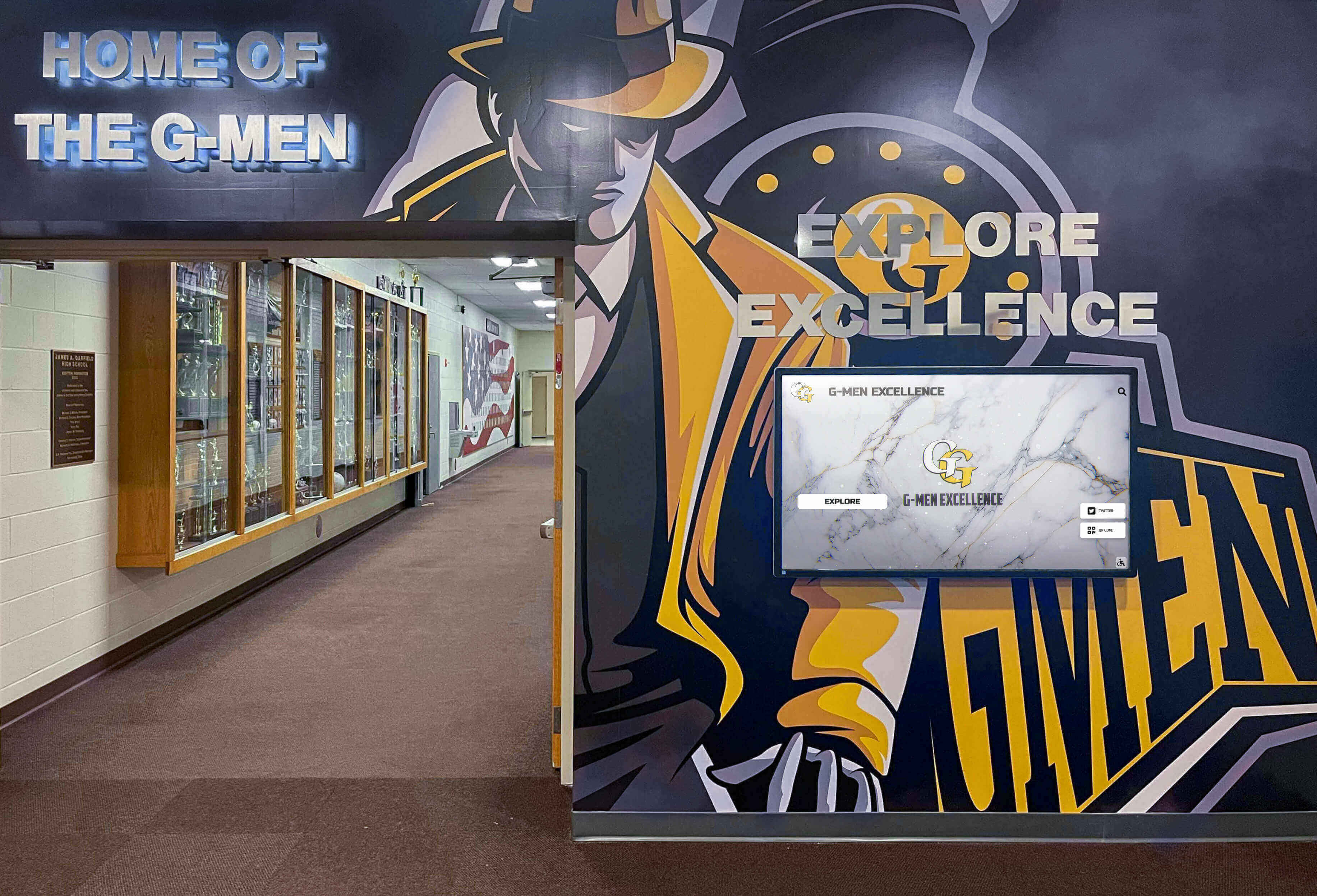
Hybrid Traditional-Digital Approaches
Combining traditional physical elements with digital displays provides benefits of both approaches while addressing concerns some stakeholders have about fully digital systems.
Effective Hybrid Configurations:
Monument with Digital Display: Create architectural monument or wall treatment incorporating school branding, colors, and traditional design elements. Integrate a digital display as the central feature showing interactive achievement content. Physical monument provides permanence and tradition while digital component delivers unlimited capacity and modern functionality.
Physical Plaques Plus Digital Extension: Honor recent inductees (past 5-10 years) with traditional plaques maintaining familiar physical recognition. Include QR codes on plaques linking to extended digital profiles with additional photos, videos, statistics, and biographical information unavailable on physical plaques. Digital extension provides rich storytelling while physical plaques satisfy traditionalist preferences.
Trophy Cases with Digital Context: Preserve physical trophies in cases but add adjacent digital displays providing context, historical information, highlight videos, and connections between achievements across decades. Physical artifacts provide tangible connection to achievement moments while digital content tells comprehensive stories.
Hybrid approaches typically cost more than either pure traditional or pure digital implementations but effectively bridge transition from traditional to modern recognition for communities with strong attachment to physical displays.
Content Ideas for Simple Hall of Fame Programs
Regardless of your chosen implementation approach, compelling content transforms displays from simple information presentation into meaningful recognition experiences.
Essential Achievement Information
Every hall of fame profile should include certain fundamental information clearly presenting achievements:
Individual Recognition:
- Full name with proper spelling verification
- Graduation year or years active
- Primary achievement or honor received
- Supporting statistics or performance details
- High-quality photograph
- Brief biographical context when available
Team Recognition:
- Team or group name
- Season and year
- Achievement (championship, record, ranking)
- Coach names
- Roster (full names of participants)
- Team photograph
- Key statistics or memorable moments
Staff and Faculty Recognition:
- Full name and title
- Years of service or employment period
- Major contributions or achievements
- Honors or awards received
- Photograph
- Brief statement of impact
Starting with these essentials creates solid foundation profiles you can enhance over time as resources, information, and multimedia content become available.
Storytelling Elements That Enhance Recognition
Beyond basic facts, incorporating storytelling elements transforms recognition from data presentation into engaging narratives:
Achievement Context: Explain why accomplishments mattered—what obstacles were overcome, how achievements compared historically, what impact resulted, or how community rallied behind efforts.
Personal Reflections: Include first-person quotes from honorees discussing what recognition meant to them, advice for current students or members, or reflections on their experiences.
Historical Connections: Link achievements to broader institutional history, show how current successes built on past foundations, or demonstrate program evolution over time.
Visual Storytelling: Incorporate multiple photos showing career progression, victory moments, or candid scenes bringing achievements to life beyond formal portraits.
Video Elements: For digital implementations, include highlight videos, acceptance speeches, interview segments, or archival footage adding emotional impact text cannot achieve.
Organizations exploring hall of fame best practices discover that investment in compelling content delivers more engagement value than expenditure on elaborate physical displays presenting minimal information.
Budget-Friendly Implementation Strategies
Limited budgets require creative approaches maximizing recognition impact while working within financial constraints.
Phased Implementation Approach
Rather than attempting comprehensive historical coverage immediately, implement strategically phased programs building over time:
Phase 1 - Foundation (Year 1)
- Focus on most significant recent achievements (past 5-10 years)
- Establish selection criteria and nomination processes
- Create 20-50 initial profiles with quality content
- Launch with one location/display
- Investment: $2,000-$8,000 depending on approach
Phase 2 - Historical Expansion (Years 2-3)
- Systematically add historical achievements by decade
- Expand content depth with additional photos, stories
- Implement second display location if multi-area needs exist
- Investment: $1,000-$4,000 annually
Phase 3 - Enhancement (Years 3-5)
- Add multimedia content (videos, audio, documents)
- Implement advanced features (search, filtering, timelines)
- Achieve comprehensive historical coverage
- Investment: $500-$2,000 annually
This approach distributes costs over multiple budget cycles while delivering recognition value from year one rather than delaying everything until funding materializes for complete programs.
Fundraising and Alternative Funding
Hall of fame programs offer excellent fundraising opportunities because recognition resonates emotionally with stakeholders:
Alumni Contributions: Solicit donations from alumni classes or individual graduates who value seeing their achievements preserved. Class reunion giving campaigns work particularly well.
Booster Organizations: Athletic boosters, arts support groups, and academic foundations often fund recognition programs celebrating their focus areas.
Corporate Sponsorships: Local businesses may sponsor hall of fame programs in exchange for modest recognition, particularly if you serve their employee communities.
Naming Opportunities: Offer naming rights for display locations, specific achievement categories, or annual induction classes to major donors.
Memorial Donations: Families often make memorial contributions honoring deceased individuals. Hall of fame programs provide meaningful, lasting tributes.
Capital Campaigns: Include recognition system upgrades in broader facilities improvement or technology modernization campaigns.
Organizations exploring digital recognition on tight budgets discover creative funding strategies making substantial implementations achievable even for schools with limited discretionary budgets.
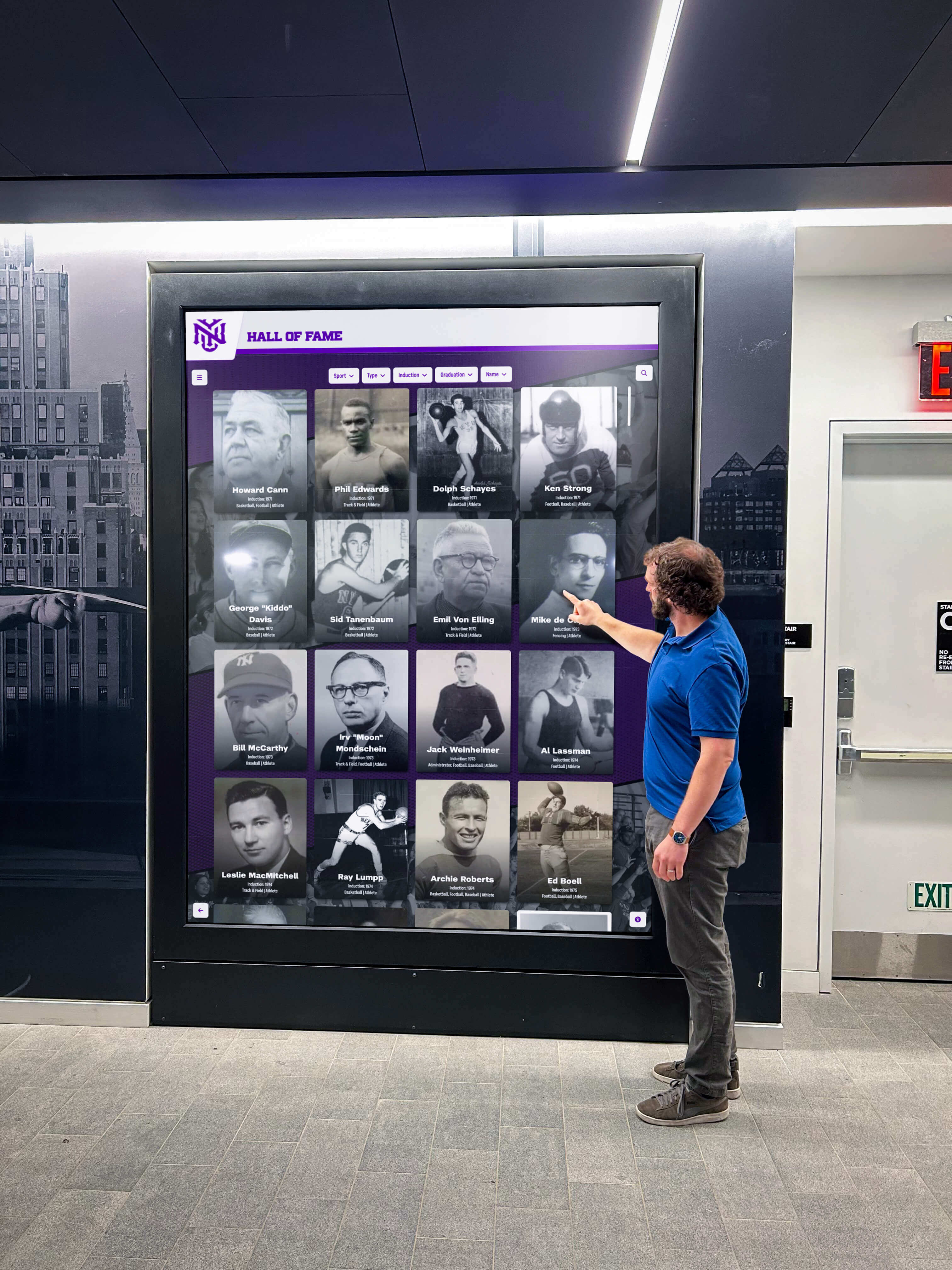
DIY Content Development
Professional photography, videography, and writing services improve quality but aren’t mandatory for effective recognition programs:
Student Involvement: Engage journalism students, photography classes, video production programs, or media clubs in content development. This provides real-world experience while creating quality content at minimal cost.
Volunteer Alumni: Many alumni with professional skills in writing, photography, design, or videography willingly contribute services supporting their alma mater recognition programs.
Smartphone Photography: Modern smartphone cameras capture excellent photos when proper techniques are followed—good lighting, simple backgrounds, proper framing. Quality photos require skill and attention, not expensive equipment.
Template-Based Design: Use free or low-cost design platforms like Canva, Google Slides, or Microsoft PowerPoint creating professional-looking achievement profiles from customizable templates.
Phased Quality Improvement: Start with available content and systematically enhance quality over time—adding professional photos, improving descriptions, incorporating videos—as resources permit.
Location Ideas for Simple Hall of Fame Displays
Even the best recognition content delivers minimal impact if placed where stakeholders never encounter it. Strategic location selection maximizes visibility and engagement.
High-Traffic Area Considerations
Main Entrances and Lobbies: First impression spaces where visitors naturally enter ensure maximum exposure to external guests while providing focal points for school tours and prospective family visits.
Athletic Facilities: Gymnasiums, training rooms, and field house entrances keep achievements visible where current athletes train and compete, creating constant inspiration and demonstrating program excellence.
Common Gathering Spaces: Cafeterias, student centers, or congregation areas where communities naturally gather provide extended dwell time allowing deeper engagement than rushed corridor installations.
Central Hallways: High-traffic corridors connecting key facilities ensure daily exposure for current students and staff even if limiting longer interaction time.
Library or Resource Centers: Academic spaces provide appropriate context for scholarly achievements while offering quiet environments suitable for extended exploration.
Location selection involves balancing visibility, available space, infrastructure requirements (power, network), and aesthetic integration with existing environments. Visit potential locations at different times observing actual traffic patterns rather than assuming certain spaces receive high use.
Maintenance and Sustainability
The simplest implementations to maintain prove most sustainable long-term, ensuring recognition programs remain current and valuable rather than becoming abandoned installations.
Designing for Easy Updates
Traditional Physical Displays: Select systems allowing new additions without disrupting existing recognition. Modular mounting systems, expansion spaces in designs, and standardized specifications simplify future growth.
Digital Systems: Choose cloud-based platforms with intuitive management interfaces enabling authorized staff to add achievements, update information, and publish changes remotely without requiring technical expertise or vendor intervention.
Hybrid Approaches: Implement digital components handling routine updates and additions while reserving physical elements for permanent installations or special recognition requiring tangible presence.
Establishing Update Workflows
Clear Responsibilities: Assign specific individuals accountability for content management rather than leaving it to diffuse “everyone’s job” resulting in no one taking ownership.
Regular Schedule: Establish routine update cycles—monthly reviews, quarterly additions, annual featured content rotations—preventing ad hoc approaches that result in inconsistent attention.
Quality Standards: Create templates and guidelines ensuring consistent content quality regardless of who enters information. Standardization maintains professional appearance as your program grows.
Approval Process: If needed, implement simple review workflows allowing subject matter experts to verify accuracy before publication without creating bottlenecks that prevent timely updates.
Schools and organizations examining community hall of fame implementation discover that systems designed for easy maintenance remain current and valuable while complex approaches requiring extensive effort quickly fall into disrepair.
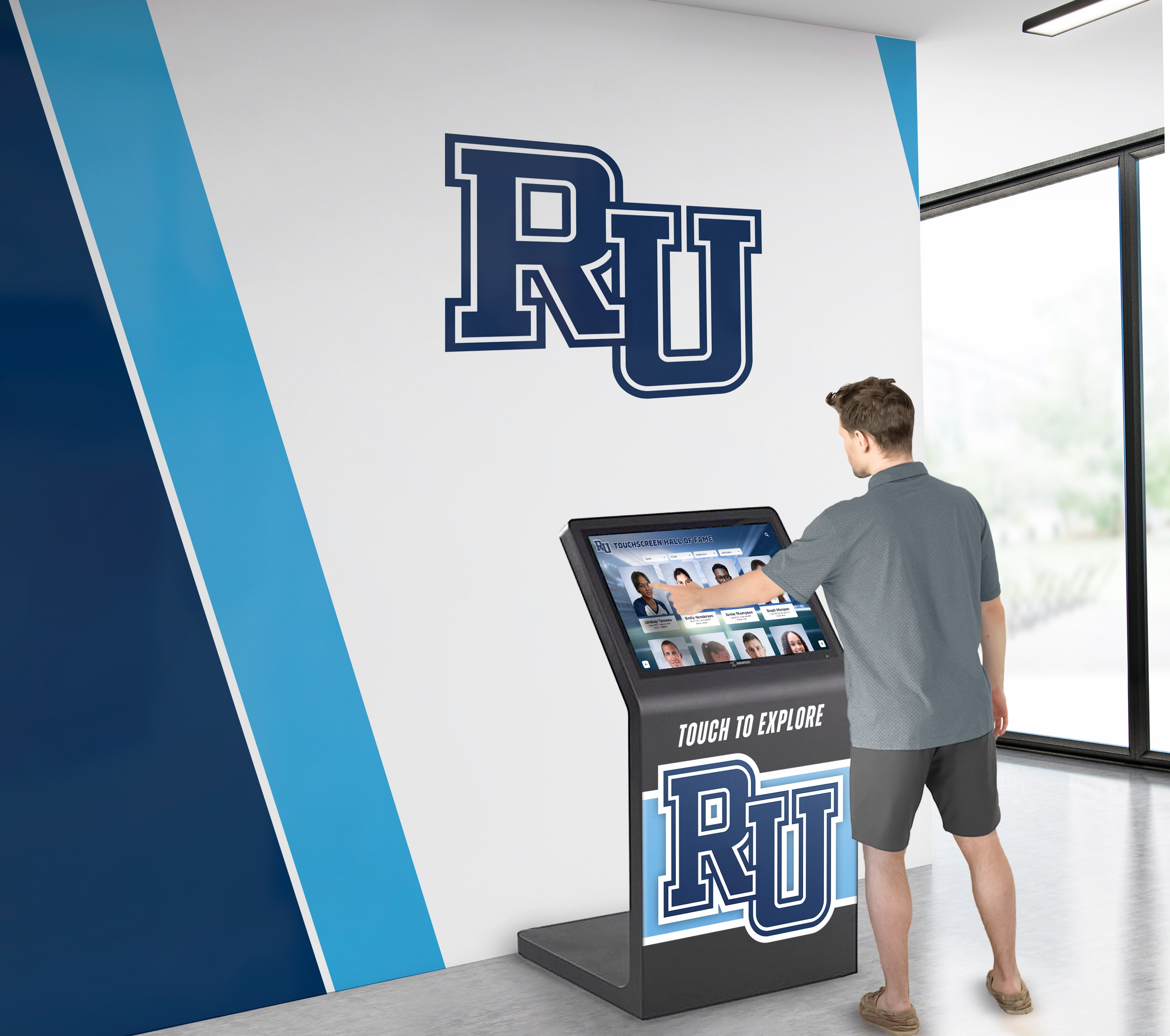
Getting Started: Your Simple Hall of Fame Action Plan
Ready to move from considering to implementing? Follow this systematic action plan creating momentum while maintaining manageable scope.
Step 1: Define Your Purpose (Week 1)
Clarify what you want your hall of fame to accomplish:
- What achievements deserve recognition?
- Who are your primary audiences?
- What success looks like for your program?
- What resources (budget, staff time, space) are realistically available?
Document answers creating shared understanding among stakeholders guiding subsequent decisions.
Step 2: Select Your Approach (Weeks 2-3)
Based on your purpose, resources, and community preferences, choose your implementation approach:
- Under $500: Bulletin board or framed certificate display
- $1,000-$5,000: Simple plaque wall or vinyl graphics
- $3,000-$8,000: Basic digital slideshow display
- $8,000-$15,000: Single interactive touchscreen display
- $15,000+: Multiple displays or hybrid traditional-digital system
Visit similar installations at comparable institutions seeing different approaches in real environments before finalizing decisions.
Step 3: Develop Initial Content (Weeks 4-8)
Begin with manageable scope preventing delays waiting for complete historical coverage:
- Identify 20-50 priority achievements for initial recognition
- Gather high-quality photos for each honoree or team
- Compile essential information (names, years, achievements, context)
- Create consistent templates or formats
- Review for accuracy and completeness
Quality matters more than quantity. Better to launch with excellent coverage of priority achievements than delayed mediocre coverage attempting comprehensiveness.
Step 4: Implement and Launch (Weeks 9-12)
Execute your chosen approach with appropriate attention to quality:
- Procure necessary materials, equipment, or services
- Prepare installation locations (mounting surfaces, power, network)
- Create or install physical displays
- Configure and load digital systems if applicable
- Test thoroughly before public unveiling
Plan formal launch event generating awareness and establishing your hall of fame as important institutional feature worthy of community attention and engagement.
Step 5: Maintain and Expand (Ongoing)
Establish sustainable management ensuring long-term success:
- Schedule regular content additions and updates
- Gather feedback informing improvements
- Systematically expand historical coverage
- Track engagement and demonstrate value
- Continuously enhance as resources allow
The most successful programs view initial implementation as foundation for evolving recognition systems serving communities for decades, not one-time projects ending at launch.
For organizations ready to implement digital recognition solutions, comprehensive implementation guides provide detailed step-by-step instructions ensuring successful deployment and long-term sustainability.
Conclusion: Simple Recognition, Powerful Impact
Creating effective halls of fame honoring achievements, inspiring stakeholders, and building community pride doesn’t require elaborate installations, massive budgets, or complex technology. The most impactful recognition programs authentically celebrate accomplishments in ways that resonate with specific communities while working within available resources.
Simple implementations focusing on recognition fundamentals—clear purpose, quality content, visible location, professional presentation, and sustainable maintenance—consistently deliver more value than expensive projects lacking strategic foundation. Whether you choose traditional framed displays, basic plaque walls, modern digital touchscreens, or hybrid approaches, success depends more on thoughtful planning and genuine commitment to honoring achievements than on expenditure levels.
The best hall of fame is the one you actually implement rather than the perfect system that remains perpetually in planning while achievements go unrecognized. Start with manageable scope, deliver quality within your means, gather feedback, demonstrate value, and expand strategically as experience and resources grow.
Your community’s achievements deserve celebration regardless of available budget. Simple hall of fame solutions make meaningful recognition accessible to every school and organization willing to prioritize honoring excellence. The investment in recognizing achievement—however modest—returns value through enhanced pride, strengthened connections, and inspired future excellence far exceeding financial costs.
Ready to begin honoring your community’s achievements? Explore how solutions like Rocket Alumni Solutions provide accessible recognition platforms scaling from simple single-display installations to comprehensive programs, all designed for straightforward implementation and easy management by non-technical staff. Every achievement matters, every story deserves telling, and every community benefits from recognition celebrating their excellence.
